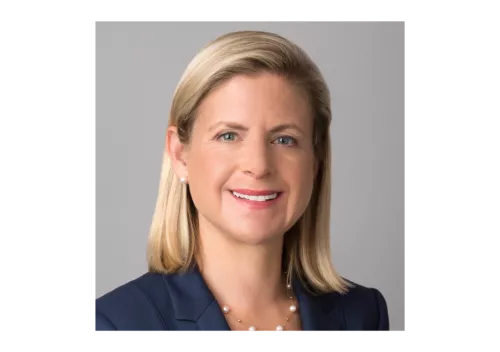Continuous change
For Goldman Sachs, this award caps several years of proxy statement refinement, striving toward a more engaging document.
The first stage was to realize that the proxy doesn’t need to be written in legalese – even if lawyers hold the pen. Stage two focused on using graphics, bullet-pointed lists and images to support the story. ‘We didn’t rest on our laurels,’ says Beverly O’Toole, managing director at Goldman Sachs. ‘A lot of companies make one dramatic change and that suffices. We continue to think about how the proxy reads.’
O’Toole praises the Goldman Sachs investor relations team for so actively engaging with shareholders on the proxy and providing feedback to her team. Adebayo Ogunlesi, Goldman Sachs’ lead independent director, has also been active in seeking feedback from shareholders and board members.
The proxy is notable for featuring an introductory letter from Ogunlesi, which discusses several governance topics, including Goldman Sachs’ board composition, structure and effectiveness. ‘The lead director letter is crucial,’ says O’Toole. ‘Other companies have started to do this recently and I think it should be mandatory.’
A big focus for O’Toole this year been how to more effectively communicate who the board members are and what functions they have. The board composition section of the proxy is preceded by an overview sheet, containing brief highlights about each director: name, age, headshot, tenure, career highlights, committee memberships, other board memberships and status as an independent board member or not.
What follows is a more comprehensive look at each board member and a chart that conveys director tenure in an easy-to-understand format.
This transparency is central to the articulation of diversity on Goldman Sachs’ board; the proxy contains the company’s definition of diversity and clearly shows, with the aid of bullet points and a flow chart, the renomination process for directors and the selection of new directors.
The use of graphics and bullet points also notably aids the readability of the compensation section of the proxy. ‘We include a voluntary table to explain what the compensation committee paid for this year’s performance,’ O’Toole says. ‘The SEC tables can be confusing. There can be a lag on equity grants, for example. We try to set out very clearly what we paid and how the compensation committee made its decisions.’
Where there are conflicts between what is required in a proxy and what is readable, O’Toole confines the mandatory legalese to footnotes. ‘Investors want clarity and brevity, not just in terms of what you do, but also why you do it,’ she explains. ‘They want clear, simple material information. We continue to move in that direction.’









